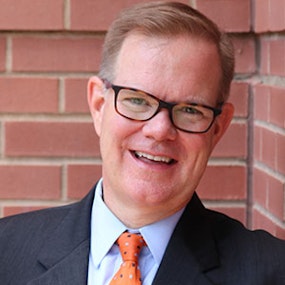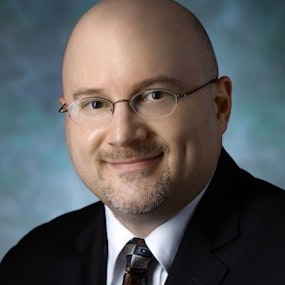ROBERT JOHNSON:
This is the award-winning Public Health Review Morning Edition for Tuesday, January 2, 2024. I'm Robert Johnson. Now, today's news from the Association of State and Territorial Health Officials.
DAVID NEWMAN-TOKER:
Congressional leaders were interested in hearing from those of us in healthcare that are involved in use of artificial intelligence in various different ways within the healthcare sector.
JOHNSON:
Dr. David Newman-Toker at the Johns Hopkins University School of Medicine joined a panel on Capitol Hill recently to discuss with House members the bias and privacy issues involved with artificial intelligence.
NEWMAN-TOKER:
Some were concerned about making sure that we allowed AI to be used to good effect in healthcare and were concerned about not excessively regulating that space. Others were concerned about the lack of payment mechanisms to be able to remunerate AI in healthcare and I expressed more general concerns about the need to focus AI's benefits and avoidance of harms around the public health and the public good.
JOHNSON:
Newman-Toker says one challenge has to do with making sure AI has the data necessary to offer informed recommendations.
NEWMAN-TOKER:
For example, on outcomes such as inaccurate diagnoses or unexpected adverse events, or reduced quality of life, there actually are no data on those things. So, the combination of either wrong data, the wrong kind of data, or absent the right kind of data together make for a risky basis for moving too quickly in the direction of artificial intelligence based on the incorrect types of data that we need.
JOHNSON:
Newman-Toker also cautions about the need to keep real world bias out of AI platforms.
NEWMAN-TOKER:
Right now, if there's a racial bias in the way healthcare is delivered, but because for people who are of Black race don't get as many tests performed as people have White race in a particular situation, the AI system will essentially copy that, and it will copy our biases and our patterns of behavior.
JOHNSON:
You can read a story about the hearing using the link in the show notes.
Most if not all states and territories are looking for ways to modernize their data systems. Dana Moore is the chief data officer at the California Department of Public Health.
DANA MOORE:
I think that ultimately, what we're driving towards is transparency, transparency to the public transparency to critical partners, healthcare policymakers.
JOHNSON:
Moore says modern systems absolutely help improve decision-making.
MOORE:
How are we making the best decisions that provide the greatest good, the greatest number? How do we know our decision is the right decision for that time and the information we have?
JOHNSON:
California has initiatives underway to address data governance, collection and sharing.
Before the holidays, you may recall, we spent two weeks talking with public health leaders about key issues on the 2024 legislative agenda. ASTHO has developed a comprehensive guide to the top 10 public health issues you might expect this year. This is ASTHO's CEO Mike Fraser.
MICHAEL FRASER:
Well, there's a lot of work that goes into the creation of each one of these, you know, these are 10 big topics ranging from infectious disease to environmental health to workforce and our team scans the waterfront, and certainly spends a lot of time thinking about what's happening and state legislators around each of these.
JOHNSON:
You can listen to our coverage of each topic on newscasts starting December 11. All you need to do is go back through your podcast player timeline to hear those episodes. You also can read the series using the link in the show notes.
JOHNSON:
Finally, this morning, it's a new year and that means ASTHO is getting ready to celebrate with a new website about public health preparedness. The Inspire Readiness website will be unveiled on Tuesday, January 16 at 2pm ET. You can get more information and sign up to attend the online event using the link in the show notes.
Before we go, we'd like to remind you to follow this newscast on your podcast player and ASTHO on social media. We're on LinkedIn, Twitter, and Facebook. That'll do it for today.
We're back tomorrow morning with more ASTHO news and information. I'm Robert Johnson. You're listening to the award-winning Public Health Review Morning Edition. Happy New Year.







